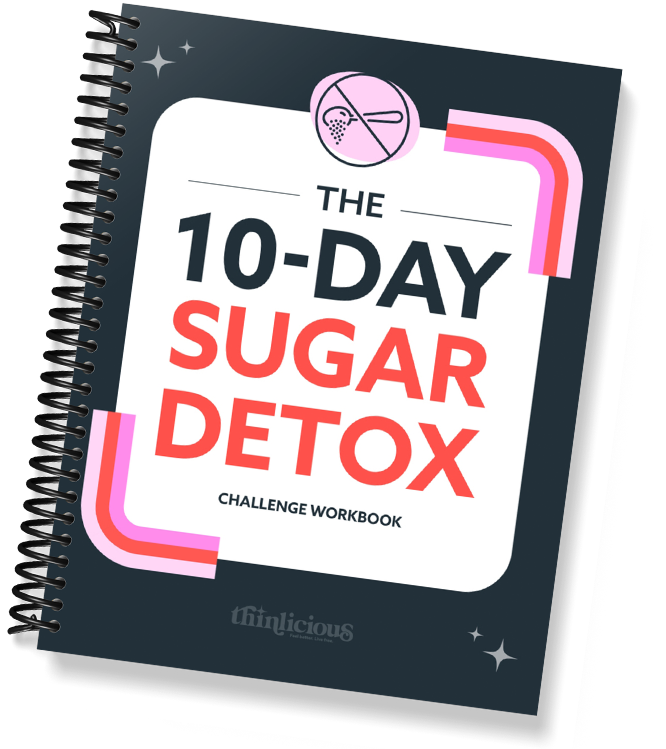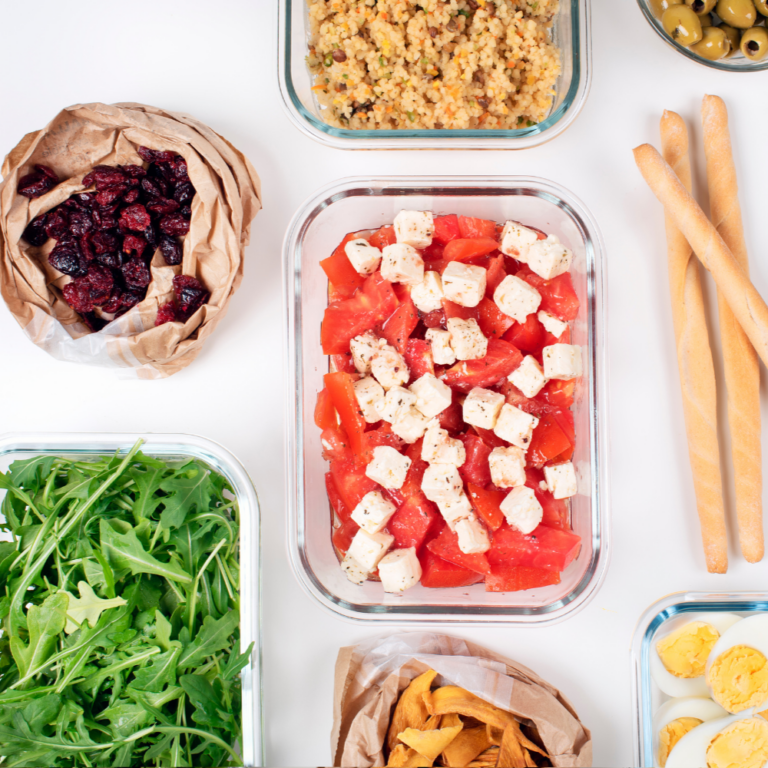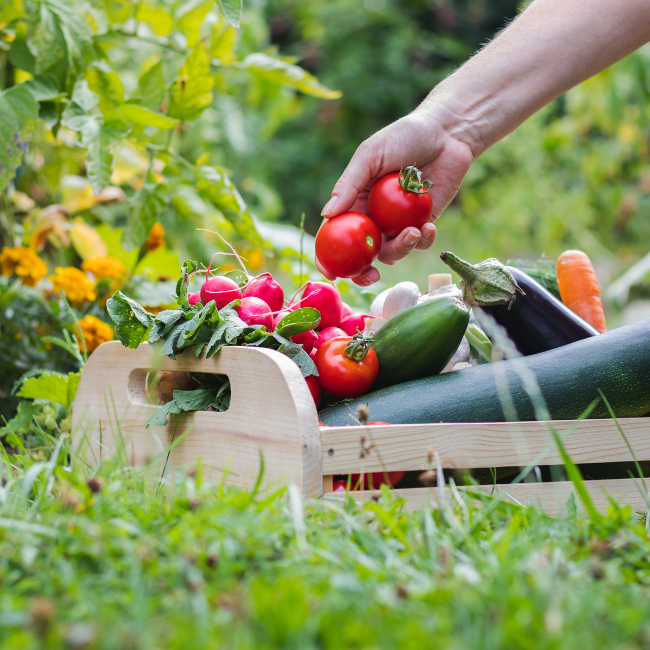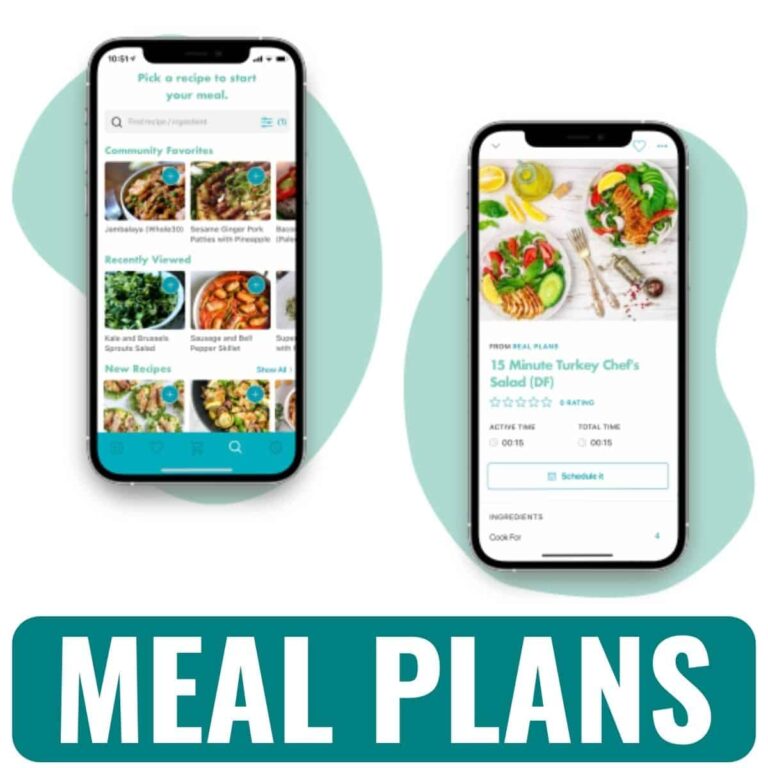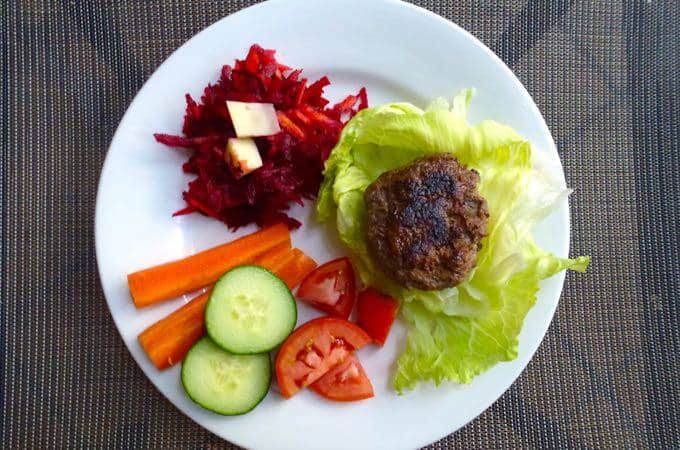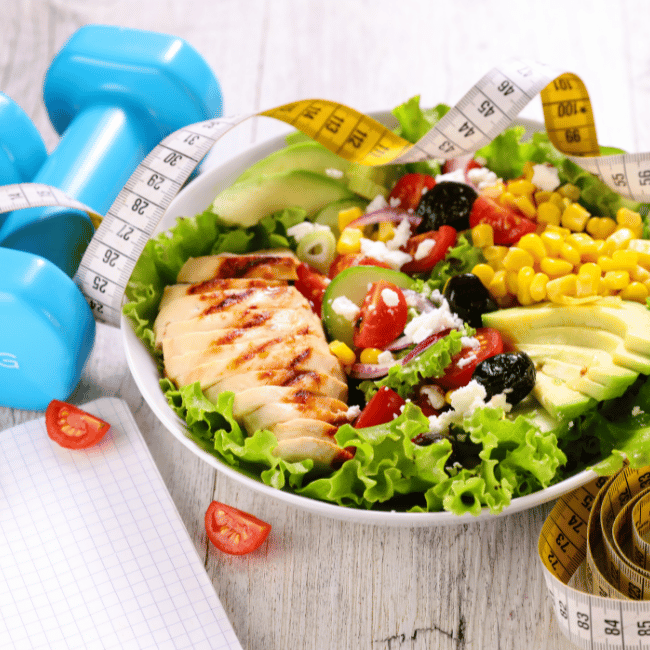Do you ever feel like you’re addicted to certain foods? Like no matter how hard you try to avoid them, you just can’t seem to resist their call?
It’s not actually your fault.
The reality is that most major food companies are actively working to make their foods as irresistible and addictive as possible. And that’s not a conspiracy theory, it’s fact. They’ve been doing it for years, and they’re REALLY good at it.
In fact, they don’t even try to hide it. There’s a reason Lay’s potato chips confidently touts the slogan “Betcha can’t eat just one.” They’ve actually tested it.
Are you ready to lose weight and heal your body for life (without dieting, drugs, or making yourself miserable)?
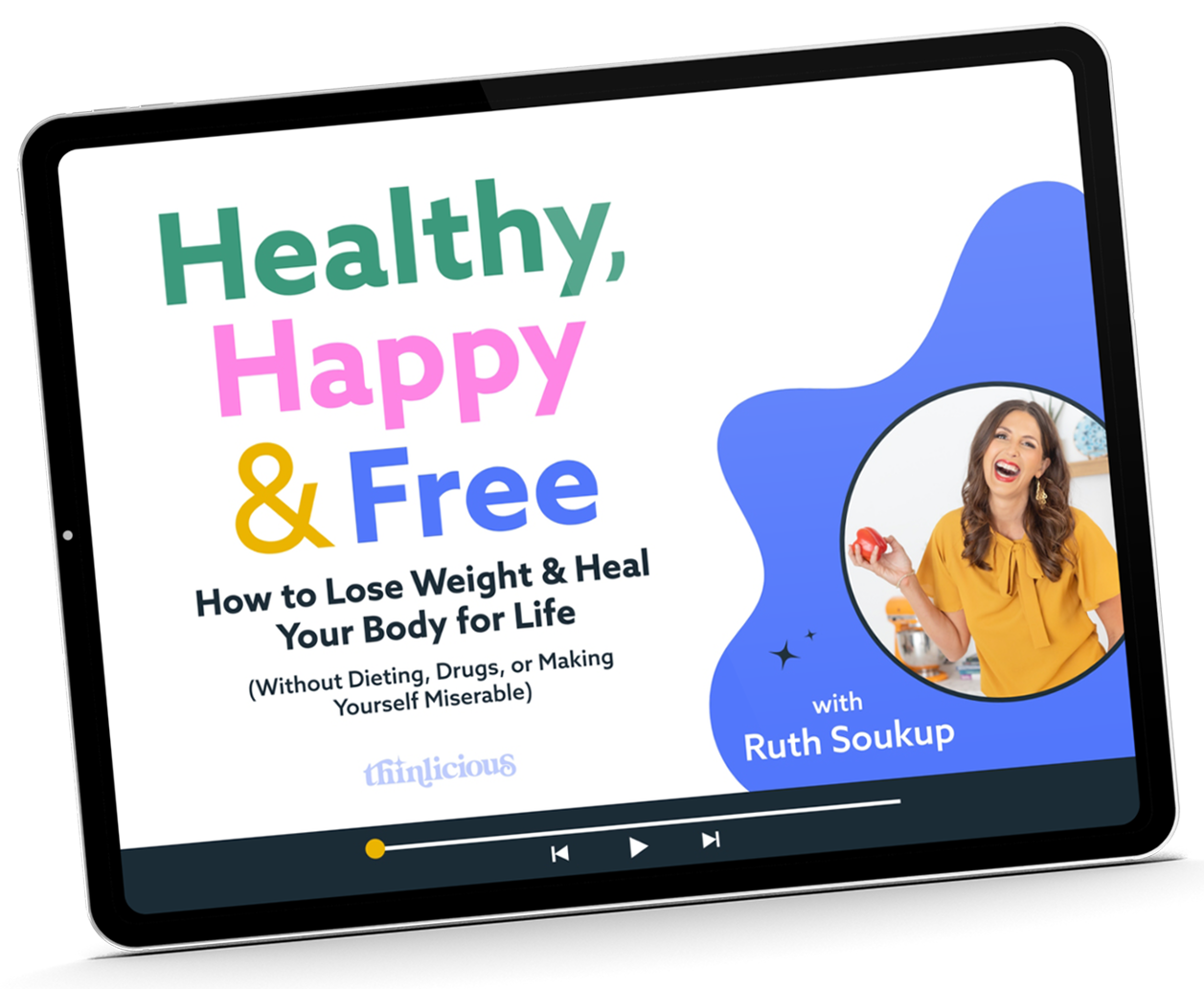
Our free on-demand video training will walk you through how to make this THE year you set health goals…and keep them.
But the thing that makes it even scarier is that we are often willing participants in our own demise. Because we love our comfort foods.
Because honestly, I think MOST people have absolutely no idea just how bad processed food is for their health—that it’s literally killing us and making us sick.
We’ve been CONDITIONED to believe that certain foods are “normal” and “healthy” when in fact they are anything but. We’ve been brainwashed by a multi-billion dollar food industry that benefits from our ignorance and our addiction to their products.
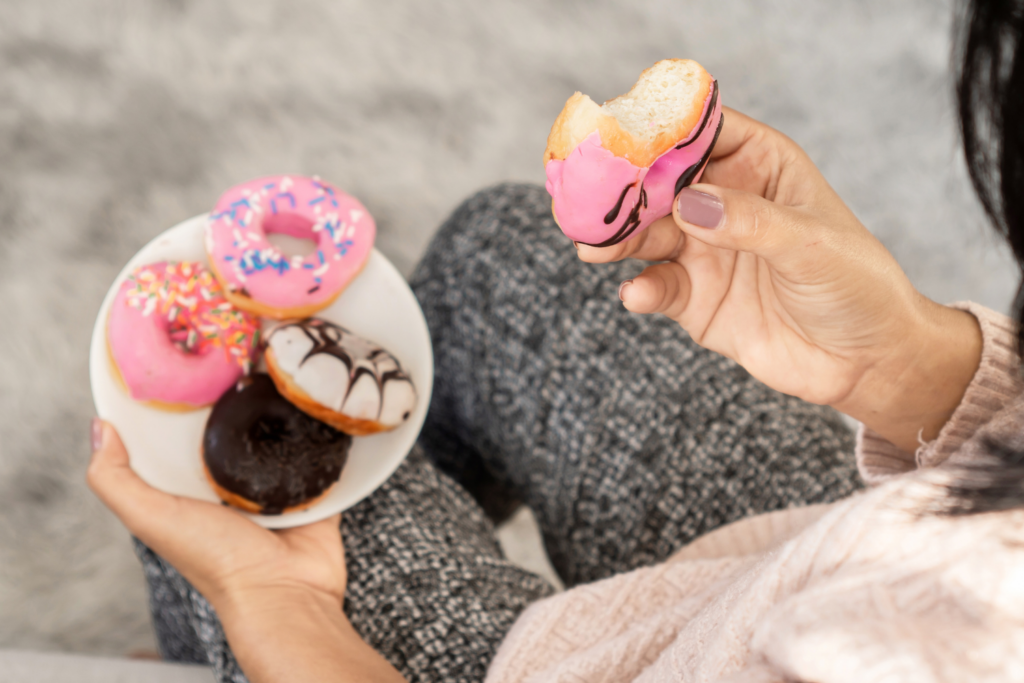
What is food addiction?
But for the sake of clarity, let’s back up just a little bit and start by defining just what we mean when we say “food addiction.”
Food addiction is a term used to describe a condition where a person becomes dependent on certain types of foods, and feels compelled to eat them, often in large quantities, despite the fact that they know that those foods are harmful and contributing to their overall poor health. This addiction is often the result of changes that occur in the brain when a person consumes certain types of highly processed foods.
In fact, studies have shown that certain foods can actually trigger the same reward centers in our brain as drugs and alcohol, and that these changes in the brain can lead to cravings and a compulsion to eat those foods, even when we know we shouldn’t. And that’s because when we eat these foods, our brain releases “feel good” chemicals like dopamine, which is often referred to as the “pleasure hormone.”
So in a lot of ways, food addiction is not all that different from other types of addiction. We are literally getting a “high” from eating certain foods, and our body and brain get hooked on that high.
And so it becomes a vicious cycle. We eat these foods, our brain releases dopamine and rewards us for it, and then we want to eat more. And more. And more. Even when we know we shouldn’t. Even when we know it’s making us sick. We just can’t stop.
And if that sounds familiar, then you’re not alone. Food addiction is a real thing, and it affects millions and millions of people. In fact, a 2018 study of the global burden of disease estimated that over 86 million people in the United States alone are currently living with some form of food addiction.
That’s a LOT of people.
And it’s also a really big problem, because it means that there are SO many of us out there struggling with this issue every single day. And it’s not just the struggle of trying to lose weight, or even the physical toll that these highly processed, toxin-filled foods are having on our bodies. It’s the shame and the guilt and the self-loathing that so often comes with addiction, no matter what that addiction might be.
Because the truth is, it’s SO easy to look at someone who is 100 pounds overweight and say, “well, they just need to stop eating so much and start exercising.” But if that person is dealing with food addiction, then it’s not that simple. You can’t just tell an alcoholic to stop drinking, right? But that’s so often what we do with people who are struggling with food addiction. We tell them it’s their fault, that they’re weak, that they just need to exercise some self-control.
But it’s not that simple.
Because it’s an ADDICTION. And our brain is literally being rewired to CRAVE these foods. It’s not just a matter of willpower or lack thereof. It’s a real, diagnosable condition.
So, if you think you might be struggling with food addiction, or if this issue resonates with you in any way, then the very first thing you need to do is be KIND to yourself. Recognize that this is a real issue, and that it’s not something that you can just “get over” with a little bit more self-control. You need to get to the root of the problem and start addressing it in a real way.
How food addiction affects our health
But what IS the root of the problem? In other words, what is actually happening in our bodies that is causing us to get addicted to these foods and making it so hard for us to stop eating them? What is food addiction DOING to us, and how is it affecting our health?
Well, as it turns out, it’s affecting us in a lot of ways. Because these highly processed, sugar-filled, chemically-laden foods that we’re getting addicted to are basically poison for our bodies. They are literally killing us, slowly but surely. And it’s not just our waistlines that are at risk.
Heart disease, diabetes, cancer, Alzheimer’s, autoimmune disease, leaky gut syndrome, chronic inflammation, depression, anxiety, hormone imbalance, and so many other health issues we face as a society today can all be traced back to our addiction to these highly processed foods. So in that sense, our food addiction is actually contributing to a whole host of other health problems.
And it’s not just the food itself, but all the chemicals and additives that go into these processed foods. Because so many of the ingredients that are used—things like high fructose corn syrup and white sugar and vegetable oil and artificial flavors and colors—are not only highly addictive, but also highly toxic to our bodies.
And so we’re essentially filling our bodies with poison, and then wondering why we don’t feel good, or why we’re getting sick.
And then there’s all the SUGAR. Because as we’ve talked about before on this podcast, sugar is in EVERYTHING. And it’s highly addictive. In fact, some studies have shown that sugar is even MORE addictive than cocaine. And that’s because, just like other addictive substances, sugar triggers the release of dopamine in the brain, which causes the pleasurable sensation that we then become addicted to.
And this is a really big deal, because sugar is in SO many of the foods we eat, even the ones we don’t necessarily think of as being sweet. It’s in our bread and our pasta and our salad dressing and our ketchup and our yogurt and our granola bars and our soda and our “healthy” fruit juice. And so we’re eating it all the time, without even realizing it. It’s inescapable.
And that’s what’s so scary about food addiction. It’s not just that we’re getting addicted to a handful of foods that we can then avoid. It’s that we’re getting addicted to SO many of the foods that make up the Standard American Diet. The foods that are literally everywhere. The foods that are considered “normal” and “healthy.” The foods that we grew up eating and that we’re now feeding to our own kids.
We’re literally passing down our addiction to the next generation.
And that addiction is having a devastating effect on our collective health as well as on the health of our children. Childhood obesity is at an all-time high, and type 2 diabetes, which used to be called “adult-onset diabetes” because it was so rare in kids, is now being diagnosed in children as young as 8 years old.
This is a problem, you guys. A HUGE problem. We have to start taking it seriously.
But the problem is, it’s an ADDICTION. And recognizing that it’s a real addiction is the first step in being able to do something about it. Because if you were addicted to alcohol or drugs, the very first thing you would have to do is GET CLEAN. You would have to stop putting those substances in your body.
And that’s also true of food addiction. You have to quit eating the foods you’re addicted to.
It’s not easy. But it is POSSIBLE.
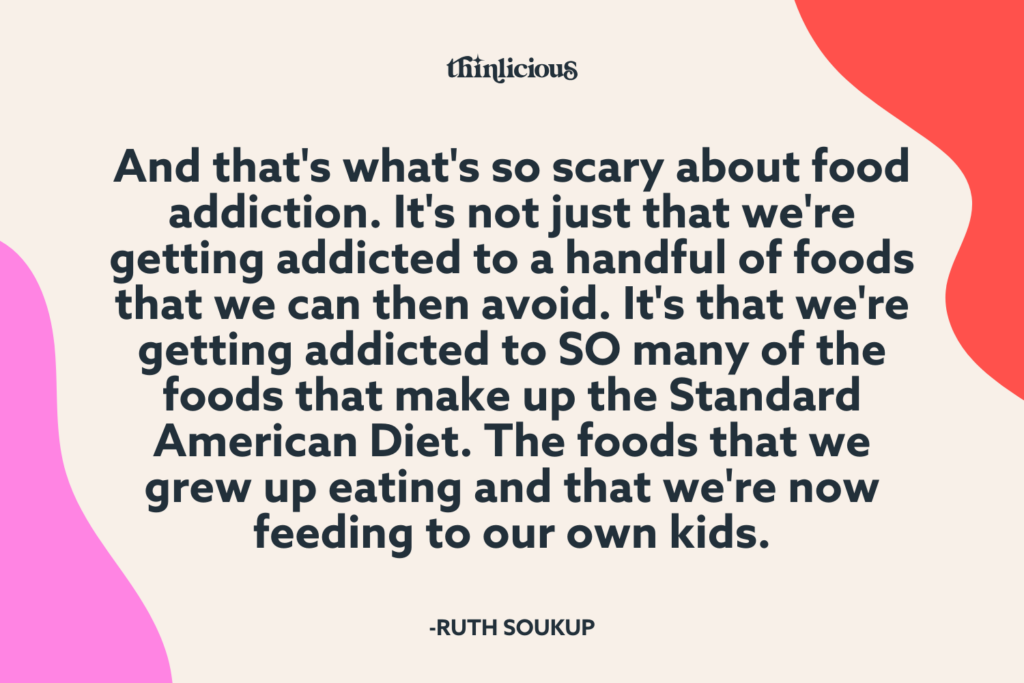
How the food industry is making us addicted
But before we talk about HOW to do that, let’s talk a little bit about how the food industry is actually making us addicted to their products in the first place—because it’s not just some random accident. They’ve been doing this for years, and they’re really good at it.
Basically, the food industry has a SECRET WEAPON that they use to get us hooked on their products, and that secret weapon is something called the “bliss point.”
But what exactly IS the bliss point? Well, it’s the perfect combination of sugar, fat, salt and other flavors that make a food taste SO good that we literally can’t resist it. It’s the reason why that bag of potato chips is so hard to put down, or why you can eat an entire pint of Ben & Jerry’s ice cream in a single sitting, or why you just can’t say no to that slice of chocolate cake, even when you’re so full you feel like you might explode. It’s the reason why certain foods are so incredibly addictive.
And the food industry knows this.
In fact, they’ve been studying the bliss point for years, and they spend BILLIONS of dollars every year to figure out how to make their products as addictive as possible. They hire food scientists and flavorists to create just the right combination of flavors and textures that will keep us coming back for more.
They even use something called “mouthfeel technology” to figure out how to make a food feel just right in our mouth, so that we get that perfect sensation of crunch or creaminess or whatever it might be, that will make us want to keep eating.
It’s crazy! And it’s SO sneaky.
But it doesn’t stop there. Because the food industry also knows that in order to keep us addicted to their products, they have to make them as convenient and accessible as possible. And that’s why you’ll find highly processed, addictive foods literally EVERYWHERE you go—from the grocery store to the gas station to the corner coffee shop to the vending machine in your office building.
They’re everywhere.
And then there’s the marketing. Because the food industry spends billions of dollars every year to market their products to us. And not just in commercials and on billboards, but in the grocery store itself. They know all the tricks to get us to buy more. They know that we’re more likely to buy something if it’s at eye level than if it’s on the bottom shelf. They know that we’re more likely to buy something if it’s brightly colored or has a happy face on the box. They know that we’re more likely to buy something if we can try it first.
It’s all a big game, and we are the pawns.
So what can we do about it?
So what can we do about it? How can we break free from this addiction and start taking control of our own health? How can we fight back against a multi-billion dollar industry that’s literally been working for decades to keep us hooked on their products?
Well, the first thing we have to do is acknowledge that it IS an addiction. We have to recognize that we’re not just dealing with a lack of willpower or self-control. We have to be kind to ourselves and understand that this is a real, diagnosable condition that requires a real solution.
And then we have to make a choice. We have to decide that our health is more important than that next hit of dopamine. We have to decide that we’re worth it. That our kids and our grandkids are worth it.
And then we have to take action.
Because as I said before, the first step in overcoming any addiction is to STOP putting that substance in your body. You have to GET CLEAN.
You have to quit eating the foods you’re addicted to.
And I know that’s a whole lot easier said than done. I know because I’ve been there.
I’ve been the girl who used to eat a full bag of Doritos in one sitting without even thinking about it. The girl who would go out of her way to drive to the store just so I could buy that ice cream. The girl who would literally hide the empty containers in the bottom of the trash can so my husband wouldn’t see how much I’d eaten. The girl who was so addicted to sugar and processed food that I couldn’t even go a single day without it.
And I’ve also been the girl who had to go through the withdrawals. Who had to suffer through the headaches and the irritability and the intense cravings that come from detoxing your body from all that garbage. The girl who had to learn how to cope with stress and sadness and all the other emotions that I used to numb with food.
It wasn’t easy. It was probably one of the hardest things I’ve ever done.
But it was SO worth it.
Because I was able to break free from that addiction. I was able to get clean and stay clean. And now, more than 10 years later, I can honestly say that I am no longer addicted to food. I can take it or leave it. I can go for days and days without eating anything processed, without eating anything that’s not good for my body, all because I know how much better I feel when I make the right choices.
And that’s what I want for you too. I want that freedom from addiction. I want you to be able to make the right choices for your health, not just once in a while, but all the time. I want you to be able to enjoy your life without constantly having to think about food. I want you to be able to break free from the hold that the food industry has over you and your health.
So let’s talk about how to do that—practically, how to start taking those steps towards overcoming your food addiction and breaking free from the hold that the food industry has over you.
Step 1: Educate yourself
The first thing you need to do is start educating yourself. You need to understand just how bad these highly processed, sugar-filled, chemically-laden foods are for your health. You need to understand how they’re affecting your body and your brain, and why they’re so incredibly addictive. You need to understand what’s at stake—not just your waistline, but your overall health and well-being. You need to understand that this is a real, diagnosable condition that requires a real solution.
And honestly, if you’re listening to this podcast, then you’re already doing a good job of that. So keep it up. Keep listening. Keep learning. And if you need more information, then I would encourage you to go watch our free training, Healthy, Happy & Free in 2024, which is all about understanding the science behind what’s making us fat and sick, as well as the best way to actually get healthy and lose weight in a way that’s sustainable long term.
So educate yourself. Arm yourself with knowledge. Because knowledge really is power.
Step 2: Get accountable
The second thing you need to do is get accountable. You need to find someone or something to help you stay on track—someone who can support you and encourage you, but also someone who can call you out when you’re headed for trouble.
And this could be a lot of different things. It could be a friend or a family member who is willing to do this with you. It could be a coach or a trainer or a doctor. It could be an online support group—in fact, we have a super active Facebook group for this podcast that you are welcome to join. Just search for Thinlicious or Health Rebel on Facebook and request to join, and then you can get access to a whole bunch of other like-minded people who are working to improve their health and lose weight.
Or it could even be a system—something like our Thin Adapted System. Because the great thing about having a system that works is that it gives you a roadmap to follow, and that roadmap makes it easier to stay accountable. It’s something that you know has worked for other people, and so if you just do the work, it will work for you too.
Regardless of what or who you choose to keep yourself accountable, just make sure that they are someone or something that is positive and supportive. We don’t need any more negativity in our lives, especially when we’re trying to overcome addiction.
Step 3: Make a plan
Now that you’ve educated yourself and found your accountability partner or system, it’s time to make a plan. A solid, actionable plan that will help you break free from your food addiction and take control of your health.
This plan should include things like setting goals for yourself—both short-term and long-term ones. It should include making small changes to start off with, so you don’t feel too overwhelmed. It should also include finding healthier alternatives to your trigger foods, and learning how to deal with cravings in a healthy way. And most importantly, it should include setting yourself up for success by creating a supportive environment—both physically and mentally.
Remember, this plan doesn’t have to be perfect or set in stone. It can evolve as you do and as you learn what works best for you. The key is to have a plan in place, so that when you’re faced with temptations or challenges, you know exactly what to do.
Step 4: Take action
Knowledge and planning are great, but they mean nothing if you don’t take action. This step is all about actually implementing your plan and making those changes in your life.
It’s not always going to be easy. There will be days when you slip up and give in to your cravings or old habits. But that’s okay. Take it one day at a time and keep moving forward. Every small step counts, and over time, they will add up to big changes.
And remember, you don’t have to do this alone. Lean on your support system and reach out for help when you need it. And most importantly, be kind and patient with yourself throughout this process.
Step 5: Celebrate your progress
Finally, don’t forget to celebrate your progress! No matter how small or big, every step towards overcoming your food addiction is worth acknowledging and celebrating.
Take some time to reflect on how far you’ve come and the positive changes you’ve made in your life. Reward yourself for your hard work and dedication. And use this as motivation to keep going and continue making progress towards a healthier, happier you.
Remember, breaking free from food addiction is not an easy journey, but it’s one that’s worth taking. So stay educated, accountable, and have a plan in place. Then take action and celebrate your progress along the way. You’ve got this! Now let’s go out there and take back control of our health from the sneaky food industry!
What if you could actually take control of
your health in just 10 days?
It’s not your fault you can’t lose weight as a woman over 40 even though you’ve likely tried literally everything. Your metabolism probably feels broken and your hormones are likely all out of whack.
But you can fix it all with ONE simple change: eliminate sugar. We make it super easy with daily lessons teaching you the science behind what makes us gain weight in our midlife and beyond! Are you ready to get started now?








